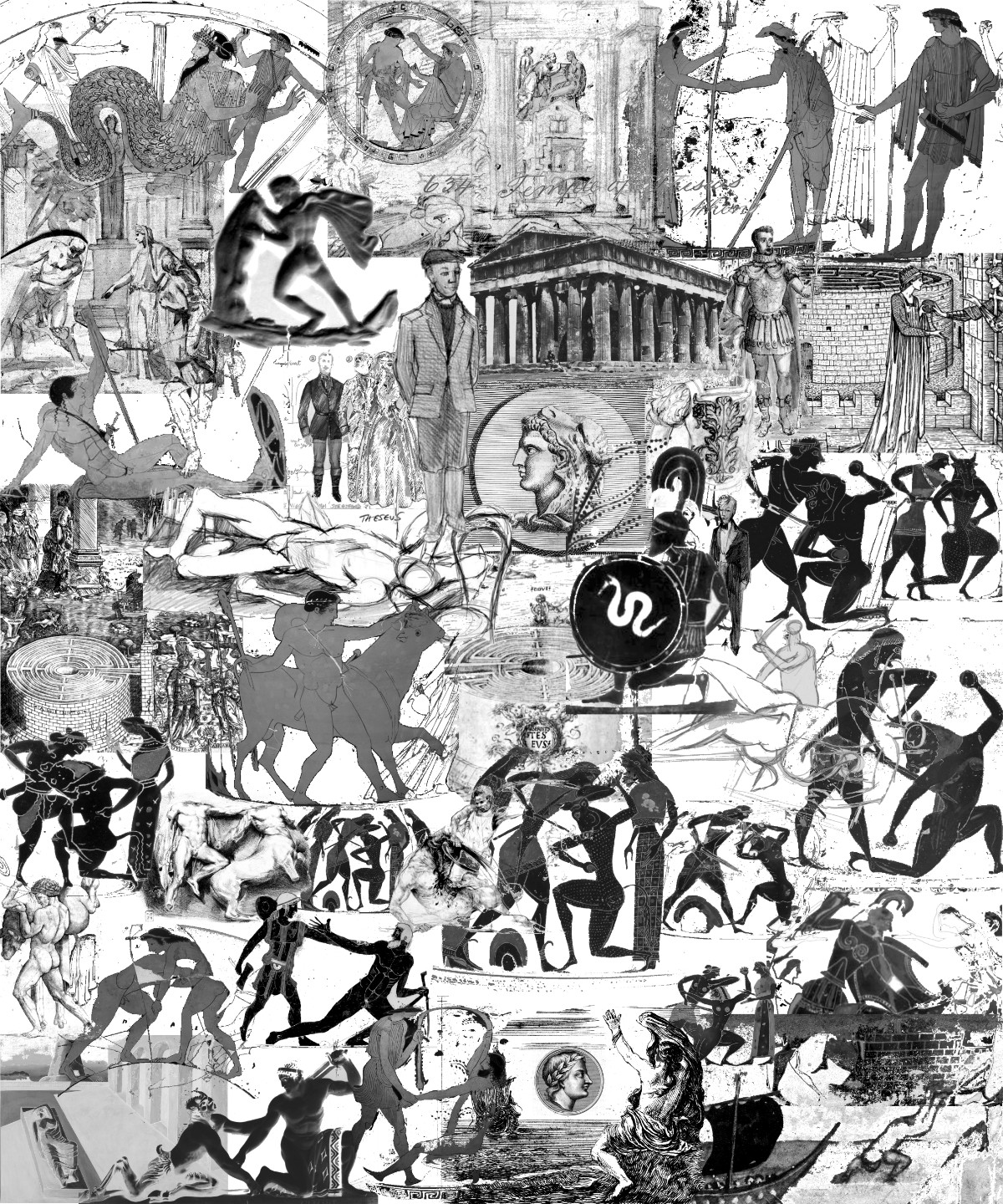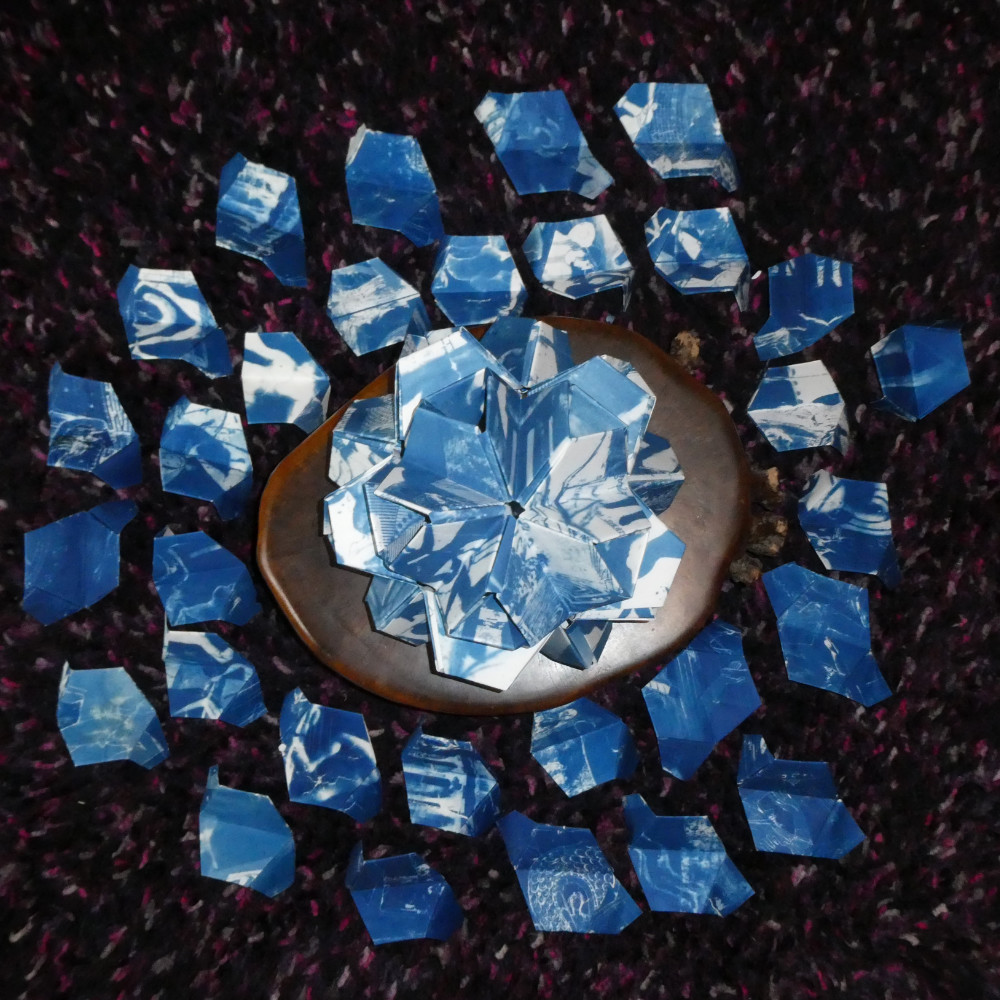The Icosahedron of Theseus
Memory changes over time, and it has been proposed since Heraclitus (535-475 BC) that identity is also in constant flux. So what makes a memory 'authentic' or 'original'?
To visualise this idea of change over time, and interrogate our ideas of authenticity, I used the story of the Ship of Theseus to create my own 'Icosahedron of Theseus'.

Two 1.8 x 1.5m versions of a collage - one positive, one negative - of Theseus-related imagery from the last 2500 years was made and printed in cyanotype.
These were cut into 30 squares, each 30 x 30 cm. The squares were used to make origami units. 30 units together made an icosahedron. One icosahedron was the 'starting'form.
Daily, units were removed from this model and replaced with 'identical' units, until after 30 days all the starting units had been replaced.
This gives us the 'repaired' icosahedron.
The 30 removed units were used to build a 'rebuilt' icosahedrom.


So, which, if any, is the authentic or original icosahedron?
When during the repair process does our attitude to authenticity change?
A questionnaire was used to collect answers and is being evaluated for a forthcoming philosophical study.

